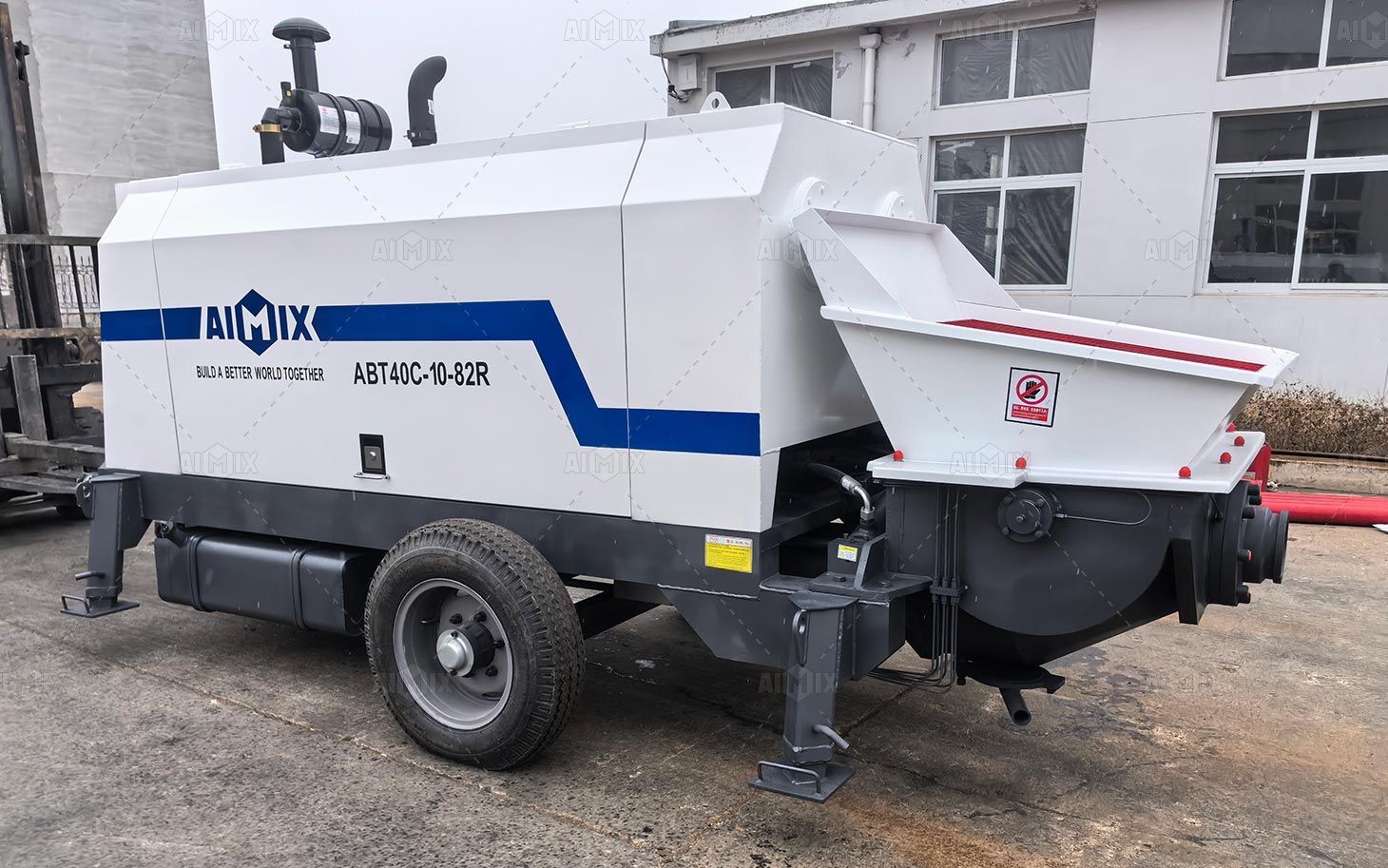How To Layout And Connect Pipes During Concrete Pump Pumping?
- By AIMIX Group
- •
- 07 May, 2024
- •
In the construction industry, the process of pumping concrete is crucial for efficiently delivering concrete to various locations within a construction site. A key aspect of this process is the layout and connection of pipes, which play a significant role in ensuring the smooth and uninterrupted flow of concrete. In this article, we will explore the importance of proper pipe layout and connection techniques during concrete pumping.
Layout of Pipes
Before concrete pumping can begin, careful planning of the pipe layout is essential to ensure optimal performance and safety. Proper pipe layout involves determining the most efficient route for the pipes to follow from the concrete mixer with pump to the desired location of the pour. Several factors must be taken into consideration during this process.
Importance of Proper Pipe Layout
The layout of pipes directly impacts the efficiency and effectiveness of the concrete pumping process. A well-planned layout minimizes the need for excessive bending or elevation changes in the pipes, which can lead to increased friction and pressure loss. Additionally, proper pipe layout helps to prevent kinks or obstructions that could disrupt the flow of concrete.
Factors to Consider in Pipe Layout
Several factors should be considered when designing the layout of pipes for concrete pumping:
- Distance and elevation: The distance and elevation changes between the concrete pump and the pour location will influence the layout of pipes.
- Obstacles and obstructions: Any obstacles or obstructions along the route must be identified and accounted for to ensure a clear path for the pipes.
- Flexibility and maneuverability: The layout should allow for flexibility and maneuverability to accommodate changes in the pour location or unexpected obstacles.
- Flow rate and pressure: The desired flow rate and pressure of the concrete will determine the size and configuration of the pipes needed for the job.
Connection of Pipes
Once the layout of pipes has been established, the next step is to securely connect the pipes to ensure a continuous and leak-free flow of concrete. Proper pipe connections are critical for maintaining the integrity of the pumping system and preventing costly delays or accidents.
Importance of Secure Pipe Connections
Secure pipe connections are essential for maintaining the efficiency and safety of the concrete pumping process. Loose or improperly secured connections can result in leaks, which not only waste concrete but also pose a safety risk to workers and the surrounding environment. Additionally, leaks can lead to contamination of the concrete mix, affecting its quality and performance.
Techniques for Effective Pipe Connections
Several techniques can be employed to ensure effective pipe connections during concrete pumping:
- Tightening and sealing: Properly tighten and seal all pipe connections using appropriate fittings and gaskets to prevent leaks.
- Inspecting connections: Regularly inspect pipe connections for signs of wear or damage and replace any faulty components immediately.
- Testing for leaks: Before starting the concrete pumping process, conduct a pressure test to ensure that all connections are secure and leak-free.
- Monitoring during operation: Continuously monitor pipe connections during concrete pumping operations to detect any leaks or abnormalities and take corrective action as needed.
By following these techniques and guidelines for pipe layout and connection, contractors can ensure the efficient and safe pumping of concrete on construction sites.
Any help, please contact us through this page: https://concretemixerwithpump.com/small-concrete-pump/.AIMIX Global Products
- Stone Crusher
- rock crusher
- Limestone Crusher
- granite crusher
- quartz crusher
- quarry crusher
- Gravel Crusher
- mobile crusher plant
- stone crusher plant
- crushing plant
- mobile impact crusher
- mobile jaw crusher
- mobile crusher
- mobile cone crusher
- mini self loading concrete mixer
- self loading mobile concrete mixture
- self loading concrete mixer for sale
- self loading concrete mixer truck
- self loading cement mixer
- asphalt plant for sale
- asphalt mobile plant
- drum mix plant
- mini asphalt plants for sale
- portable asphalt mixing plant
- asphalt hot mix plant
- batching plant manufacturers
- concrete plant for sale
- small concrete batch plant
- mini cement plant
- mobile concrete plant
- portable batch plant
- stationary concrete batching plant
- ready mix concrete plant
- how does a batching plant work
- concrete batching plant price
- ready mix concrete plant in bangladesh
- concrete batching plant in uae
- concrete batching plant indonesia
- concrete batching plant malaysia
- concrete batching plant for sale australia
- concrete batching plant Philippines
- concrete batching plant for sale UK
- concrete batching plant in saudi arabia
- concrete pump
- concrete mixer with pump
- mobile concrete pump
- portable concrete pump
- concrete trailer pump
- mini concrete pump
- small concrete pumps
- diesel concrete pump
- electric concrete pump
- hydraulic concrete pump
- dry mix mortar plant
- small dry mortar plant
- automatic dry mortar plant equipment
- big dry mortar plant
- dry mortar production line manufacturer
- dry mortar production line
- Tile adhesive manufacturing plant

